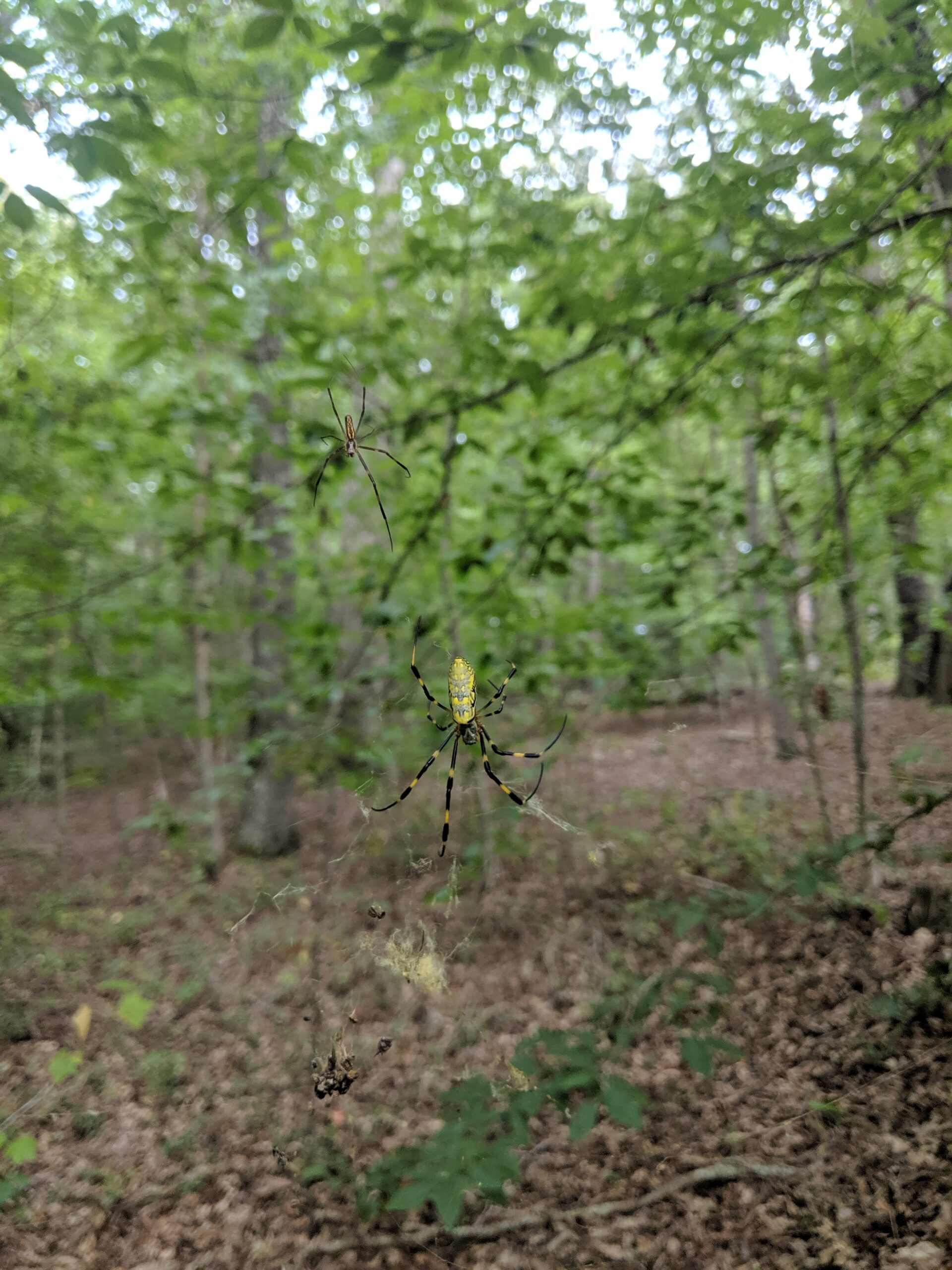Large, colorful spiders with complex webs are invading North Georgia. And no, these are not Halloween decorations.
Joro spiders were first found in the state in 2013, and they’re proliferating. Researchers say if you see one let them know.
The females are mostly yellow and can have light blue stripes and a red spot. Their legs are often striped black and yellow.
“They’re brightly colored, which is why they’re really noticeable,” said Mattias Johansson, an assistant professor at the University of North Georgia.
They’re also big. Including their legs, they can get to be 3 inches across, Johansson said. This is the time of year when the females are at their biggest. (The males are small and drab; it’s just the females that are big with all the colors.)
And, in parts of Georgia, there are now a lot of them.
“There’s clearly loads of them,” Johansson said. “There are places here in Gainesville where we can drive along, and you can see that it’s like, spider apartment complexes on the power lines. Every 3 feet or 6 feet, there’s a web for a mile.”
The spiders are originally from Asia; they live in Japan, China and Korea.
Johansson is interested in how far these spiders have spread in Georgia, and how they might be affecting native wildlife.
“We don’t have proof that they’re decimating the local insect population, but they must be eating somebody,” he said.
Scientists at the University of Georgia confirmed the spiders were here in 2015, after following up on earlier sightings near Athens. They say the spiders likely hitched a ride in a shipping container or something like that. And then they started spreading.
“Once you know that they’re there, you start seeing them everywhere,” said Kelsey Podo, the features reporter at the Gainesville Times.
She said she mostly writes about interesting people in the community, but she reported on the spiders once and then again.
“I just kept writing about them because people seem to have this strange interest with it,” she laughed. “People kept flooding my inbox with photos of spiders.”
So now, her paper is doing a community science project, mapping where people are spotting the spiders. If you see one – and Podo and Johansson both say they’re hard to miss if they are in your neck of the woods – you can add it to the map.
Johansson said the project will be helpful for his research.
“Having more eyes on the ground is very useful to us because I can’t be out there looking for spiders everywhere,” he said.
The UGA researchers are also collecting Joro spider sightings from the public.
And Johansson says even though they’re big, Joros don’t appear to be dangerous. He describes them as “docile.”









